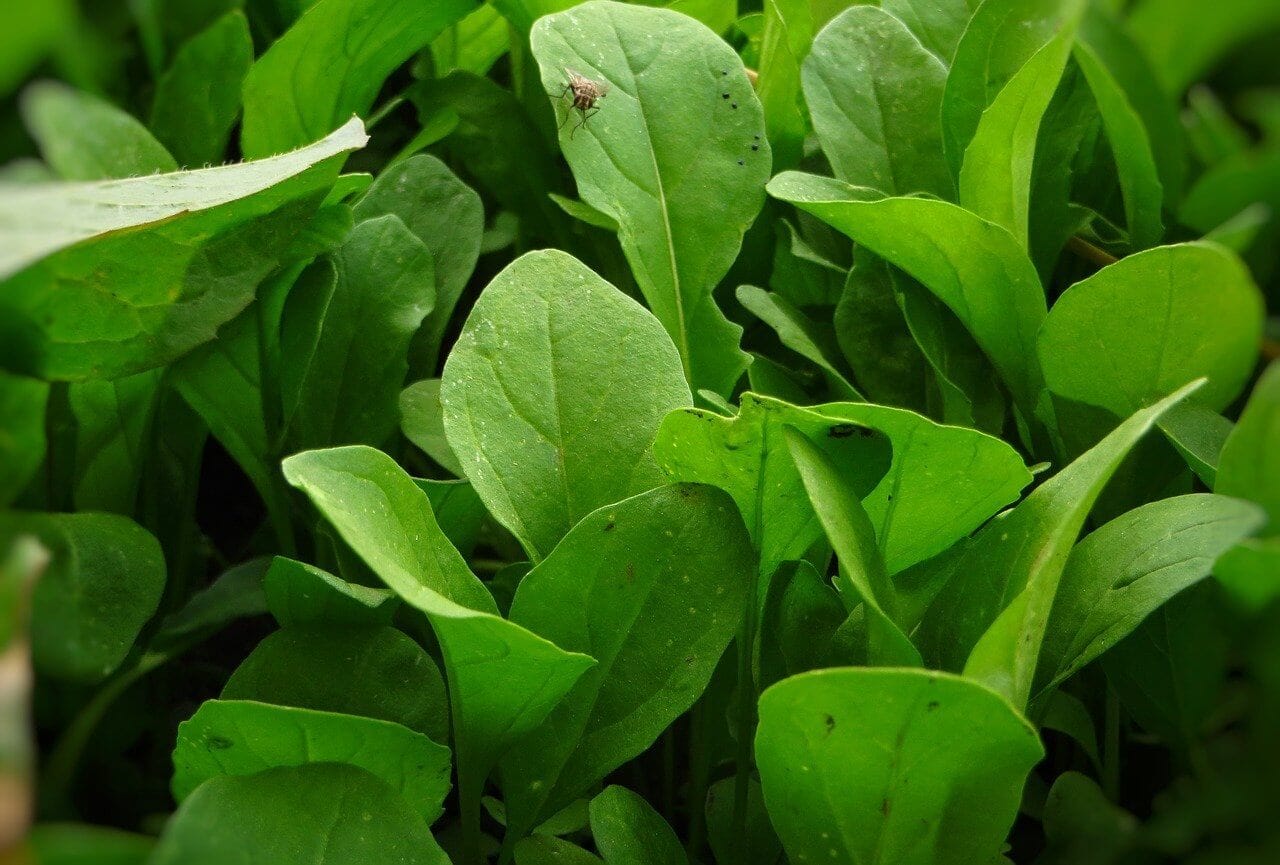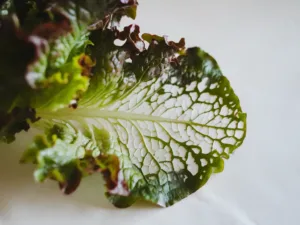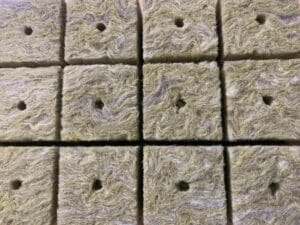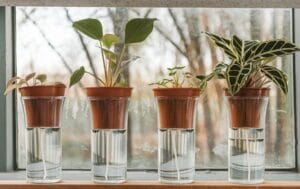Arugula, also known as rocket, has become a popular plant in the kitchen—not only for its unique, peppery taste but also for its versatility. Whether as an ingredient in salads, on pizza, or in fresh wraps, arugula adds a spicy note that makes every bite exciting. And the best part? You can easily grow it in a hydroponic system.
With hydroponics, arugula not only grows faster, but you can also harvest it year-round. Thanks to the controlled conditions—from lighting to nutrients to water supply—you’ll always have crisp, flavorful leaves whenever you need them. Sounds tempting? Let’s dive into how you can successfully grow arugula in hydroponics and which varieties are best suited for it!
The Best Arugula Varieties for Your Hydroponics
Before you get started, it’s important to know that there are different varieties of arugula. Each brings its own flavor and growth style, making them suitable for various hydroponic systems and preferences.
Classic arugula (Eruca sativa) has a mild, nutty flavor and grows relatively quickly, making it ideal for continuous harvesting. If you prefer a more intense, spicy flavor, you should try wild arugula (Diplotaxis tenuifolia). It has a stronger taste, grows slower, but you can repeatedly harvest its leaves.
Here are some of the best varieties for hydroponics:
| Variety | Flavor | Growth Rate | Special Feature |
|---|---|---|---|
| ‘Astro’ | Mild, nutty | Fast | Ideal for beginners |
| ‘Rocket’ | Spicy, slightly hot | Medium | Robust and resilient |
| ‘Wasabi’ | Very hot, peppery | Slow | Extremely intense aroma |
These varieties all have their advantages, but no matter which one you choose, they will thrive in your hydroponic system.
The Ideal Hydroponic System for Flavorful Arugula
To ensure your arugula thrives, you need to choose the right hydroponic system. Arugula is an adaptable plant that grows well in most systems, but some systems offer specific advantages.
The NFT System (Nutrient Film Technique) is ideal for arugula as the roots are constantly supplied with a thin film of nutrients, promoting fast and robust growth. For smaller projects, you can try the Kratky System—it’s easy to set up and requires little maintenance. However, if you want to take it seriously, a DWC System (Deep Water Culture) might be the right choice, as it provides continuous oxygenation to the roots.
Here are some pros and cons of the different systems:
- NFT System: Fast growth, ideal for large harvests, but requires a bit more technical experience.
- Kratky System: Simple and cost-effective, but less productive.
- DWC System: Stable growth and easy oxygen access, but requires more maintenance.
No matter which system you choose, with the right care, your arugula will sprout in no time.
Growing Arugula: Getting Started Right
Growing arugula is simple and follows a few steps. Like most plants, it all starts with the proper preparation of the seeds. Fortunately, arugula seeds are very germinative, meaning you won’t have to wait long to see the first green shoots.
First, you need to pre-germinate the seeds in a suitable medium. Many hydroponic gardeners use rock wool cubes or coconut fiber blocks for this process, as these media retain moisture well and provide the seeds with consistent supply. Be sure to plant the seeds about 0.5 cm deep and keep the environment consistently moist. At a temperature of about 18-22 °C, the seeds should germinate within 4-7 days.
Once the seedlings have developed 2-3 true leaves, you can carefully transfer them to your hydroponic system. This timing is ideal as the young plants now have enough strength to quickly adapt to the system and continue growing. Good preparation will pay off later in the form of strong, healthy plants!
Substrate for Arugula: What Matters
Choosing the right substrate is crucial for the success of your arugula cultivation. Arugula needs a substrate that offers a good balance between moisture retention and air circulation. Too wet a substrate can suffocate the roots, while too dry material can dehydrate the plant.
Rock wool is one of the most commonly used substrates in hydroponics. It retains moisture excellently and provides enough oxygen to the roots. Coconut fiber is another great option as it is biodegradable and more environmentally friendly. It also provides good drainage, preventing waterlogging. Perlite and Vermiculite can also be used as they are light and airy, but retain less moisture in comparison.
For arugula cultivation, it is advisable to opt for rock wool or a mix of coconut fiber and perlite. This combination provides the right moisture balance and offers the roots ideal growing conditions.
The Perfect Climate for Your Arugula
Arugula is a plant that grows best in cooler temperatures. A temperature range between 15 and 24 °C is optimal, with arugula growing fastest at around 20 °C. Too high temperatures can cause the plant to go to seed too quickly, which can affect the taste of the leaves, making them more bitter.
As for light, arugula needs at least 12 hours of light per day to thrive optimally. The use of LED lamps is ideal, as they provide even light and do not overheat the plants. If you are not using LED lamps, ensure your plants receive enough sunlight, especially in the colder months.
A small tip: If you like your arugula particularly spicy, you can slightly increase the light intensity or lower the temperature a bit. This can make the leaves more compact and flavorful!
The Right pH and EC Levels for Healthy Growth
To ensure your arugula thrives in hydroponics, pH and EC levels are two important parameters you should always keep an eye on. The pH level controls how well your plants can absorb nutrients. For arugula, a slightly acidic to neutral pH is ideal—between 6.0 and 6.8. A pH that is too low can block the uptake of important nutrients, while a pH that is too high can slow down plant growth.
You should also keep an eye on the EC level (electrical conductivity), which indicates how many nutrients are dissolved in the water. An EC level of 1.0 to 1.6 mS/cm is ideal for arugula. A level that is too low means the plant is not getting enough nutrients, while a level that is too high can lead to nutrient burn.
Regularly check these levels with a pH and EC meter to ensure your plants are always optimally supplied. A stable environment leads to stronger plants and a faster harvest!
How to Optimally Care for Your Arugula
Like any plant, arugula requires the right nutrients to grow healthy and strong. In hydroponics, macro and micronutrients play a crucial role. The most important nutrients include nitrogen (N), phosphorus (P), and potassium (K). These form the basis for plant growth and should be included in any good hydroponic fertilizer.
In addition to these macronutrients, arugula also needs micronutrients such as calcium, magnesium, iron, and zinc. These support the plant in photosynthesis, cell formation, and nutrient absorption.
Here is a simple list of the most important nutrients for arugula:
- Nitrogen (N): Promotes leaf growth.
- Phosphorus (P): Supports root development.
- Potassium (K): Important for overall plant strength and health.
- Calcium: Strengthens cell walls and promotes strong leaves.
- Magnesium: Plays a central role in photosynthesis.
- Iron: Prevents chlorosis (yellowing of leaves).
A balanced liquid fertilizer for leafy greens works perfectly here. However, be sure to regularly adjust the fertilizer amount, especially during growth phases. Too much fertilizer can lead to over-fertilization, which could harm your plants. Less is often more!
Always Fresh Leaves on Your Plate
Harvesting arugula in hydroponics couldn’t be easier. Depending on the variety, you can start harvesting as early as 3 to 4 weeks after sowing. The advantage of arugula is that you can harvest it multiple times as long as you cut the plant properly.
Harvest the leaves by cutting them just above the root base. Leave the heart leaves so the plant can continue to grow. This way, you can continuously harvest new leaves, and your plant remains healthy and productive. The ideal leaf size for the best taste is about 10-15 cm. Larger leaves tend to taste more bitter, especially at higher temperatures.
If you harvest regularly, your arugula will continue to produce, and you can enjoy fresh, spicy leaves for weeks. Remember to adequately supply the plants with nutrients after harvesting to stimulate growth.
Keeping Your Arugula Healthy
Although arugula in hydroponics is often less susceptible to diseases and pests than in soil, there are still some threats you should keep an eye on. One of the most common problems is downy mildew, a fungal disease that causes yellow-brown spots on the leaves. To avoid downy mildew, it is important to keep the humidity in the greenhouse or your hydroponic system low and ensure good air circulation.
Another issue to watch out for is aphids. These small pests suck the plant sap and weaken growth. You can combat aphids with biological methods, such as using beneficial insects like ladybugs or neem oil, which is harmless to plants but deadly to pests.
Here is an overview of the most common diseases and pests:
- Downy Mildew: Causes yellow-brown spots on the leaves.
- Aphids: Tiny insects that suck plant sap.
- Whiteflies: These also suck plant sap and spread diseases.
Prevention is key here. Keep your hydroponic system clean and regularly check the plants for pests or signs of disease to prevent bigger problems early.
Growing Arugula Even Better
If you want to take your arugula growing to the next level, there are a few simple yet effective tips that can make a difference. A small but impactful trick is to slightly lower the temperature at night. Cooler nights keep the arugula compact, and the leaves gain a more intense flavor. This way, you can further enhance the spiciness and peppery aroma.
Another tip is to take good care of the plant after harvesting. Don’t cut too much at once so the plant retains enough energy to form new leaves. Also, it helps to slightly increase the water supply once you’ve made the first harvest to further stimulate growth.
If you’re growing your arugula in winter, make sure there is sufficient lighting. By using LED grow lights, you can ensure optimal lighting conditions even in the darker months. This way, you can harvest fresh arugula all year round!
Your Hydroponic Arugula – Simple, Flavorful, and Healthy
Growing arugula in hydroponics is one of the best ways to have fresh, flavorful leaves readily available at any time. Whether you want to grow arugula in a small home system or a professional greenhouse, the hydroponic method consistently delivers good results—with minimal effort. By choosing the right system, caring for the plants, and knowing the optimal conditions, you can enjoy a continuous harvest.
With arugula, you not only have a fast-growing plant but also an extremely versatile ingredient that can be used in numerous dishes. Try it out and let your arugula thrive in the hydroponic system—you’ll be surprised at how easy and rewarding it is!







